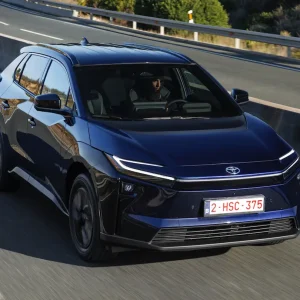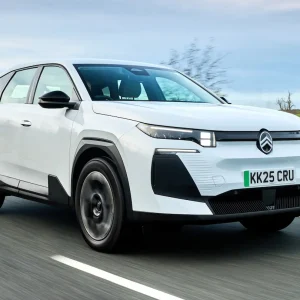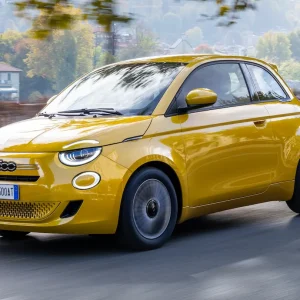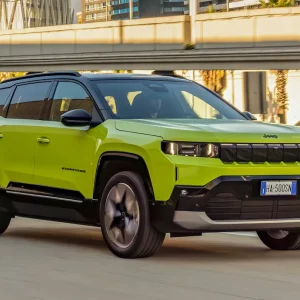The announcement of the launch of the Peugeot 408 caught us by surprise last year. Peugeot’s first all-new model in years, the French manufacturer already has a C-segment challenger in the form of the recently relaunched 308 range.
So, what can the 408 offer over its established sibling? Its bigger brother, the similarly stylish 508, has struggled to make an impact on the UK market, plus there is the constant threat from SUVs.
Where the 408 differs from conventional rivals such as the 308, Ford Focus and Vauxhall Astra, is that this new Peugeot marries features of an SUV – such as the raised stance – with sleek fastback styling.
Outside, design cues at the front, such as the grille, plus sharp headlights and vertical driving lights are nothing new – at a glance it could be mistaken for a 308 or 508. Where the 408’s design gets more interesting is down the flanks, with the window line arching upwards towards the rear, with the sharp shoulder line and lower cut out. At the back, there’s an unusual triangular rear spoiler above the high set, wiper less rear window. Other crossover cues include the standard 19in alloy wheels with chunky 205/55 tyres, raised stance and thick wheel arch trims.
Built on the same EMP2 platform as other new Stellantis models, such as the DS DS9, its sister car the Peugeot 308 and the Vauxhall Astra the 408 is a big car at 4,687mm long. Still, that means it solves the 308’s main issue – its lack of rear space. Although the curvy roofline compromises rear headroom – especially with the sunroof.
In the front, Peugeot’s i-Cockpit continues to frustrate, as it’s difficult for tall drivers to get comfortable on first acquaintance. We’re not fans of having to trade seeing the bottom of the instruments, to be low enough in the supportive front seats to be comfortable. However, we know this is less of an issue if you live with it. Although the small steering wheel is too small in our opinion. The 408 also benefits from Peugeot’s clever 3D instruments, and its latest i-Connect infotainment system, that is easier to use and has better graphics, with its 10in screen. The overall feel of the cabin is classy and premium, too.
Finally, the 408’s practical hatchback design equals 471 litres of boot space in the hybrid version that we drove, or 536 litres in petrol versions – plus a split/fold rear seat for extra practicality.
The 408 is available with 130hp or 180hp Puretech petrol engines, or of particular interest to fleet buyers, 180hp and 225hp plug-in hybrid versions – all mated with eight-speed EAT8 automatic transmission. We got to try the 225hp plug-in hybrid versions in GT Hybrid trim, which is expected to be top seller with the corporate audience.
The Plug-in Hybrid 225 combines a petrol engine with a 14.2kWh battery equalling a 40-mile EV-only range, 26g/km CO2 – and just 8% BIK, as long as you don’t go for the most expensive ‘First Edition’ version that is priced at a chunky £45,000.
The 408 PHEV starts in electric mode and total silence, making it very refined at lower speeds and around town. Like the smaller 308, the plug-in seems to work best at low speeds.
Push the throttle harder, and the 1.6-litre petrol engine smoothly and swiftly takes over. The petrol engine remains refined until you overtake, or engage ‘Sport’ mode, where it gets noisy and strained. Total power might be 225hp, but this 408 never feels very fast.
The tall suspension and battery weight equals some body roll in corners, but the ride is refined and slightly more comfortable on the standard 19in wheels than the 20in option. Elsewhere the steering is sharp, but not overflowing with feel – although we don’t think the small steering wheel helps.
So, should you go for a 408 or 308? The 408 is a niche option in the C-segment, but on top of the sharp looks, it is still a practical alternative to an SUV, wrapped in sharp styling. But is it too close in execution to the Citroen C5X?
Peugeot 408 225 GT Hybrid
P11D: £43,245
Residual value: 33.86%
Depreciation: £28,601
Fuel: £6,412
Service, maintenance and repair: £2,123
Cost per mile: 61.89p
Fuel consumption: 211-269mpg
CO2 (BIK %): 26g/km (8%)
BIK 20/40% a month: £57/£115
Luggage capacity: 471 litres
Engine size/power: 1,499cc/225hp





